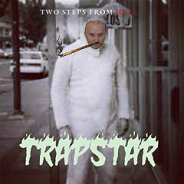Official Everybody Edits Forums
Do you think I could just leave this part blank and it'd be okay? We're just going to replace the whole thing with a header image anyway, right?
You are not logged in.
- Topics: Active | Unanswered
Pages: 1
#1 Before February 2015
- Aoitenshi
- Member
- Joined: 2015-02-18
- Posts: 2,058
Mini-Making Theory
My theory regarding minigame-making, may change from feedback and opinions! This hypothesis is far from perfect, please voice your opinion.
---
Endurance: Endurance is the time needed to complete a mini without taking a break. e.g: It takes 15 seconds to complete this mini before you can stop.
Correct example: Hold Space world has an extraordinarily long endurance (though easy), because you cannot stop anywhere. Should you stop, you cannot continue, forcing you to restart.
Wrong example: Chained Hook Jumps had a short endurance, because if you stopped at above ledge, you still can finish the minigame.
---
Sequences: Sequences are the orders of keys you need to press to complete the mini.
Sequence (e.g: Jump) is mostly easy for most people, most experienced tend to use more than one sequence to form a Simultaneous Sequence. (e.g: Jump+Left+Down)
Example: Hold Right (1), Jump (2), Jump+Up (3), Jump+Down (4), Tap Up (5); that?s five sequences.
Although Hold Space (15 Secs, 1 Sequence) had a long endurance (15 seconds), it?s very easy because it only had one sequence, which is Hold Space+Right or Hold Space+Left.
Hook Jump (0.3-0.5 Secs, 3 Sequences), despite having short endurance, is pretty hard, because the second sequence demands you to be precise and quick. (Right, Jump, Left / Left, Jump, Right)
---
Resolve: Endurance and Sequences works together to form a mini. Short Endurance with a lot of Simultaneous Sequences can easily step up the difficulty of your minigame.
Example: KO Death Dominion, Minigame 13: (2.5 Seconds, 10 Sequences) Hold Right (1) [Jump (2), Jump+Up (3), Jump+Down (4), Tap Up (5), Jump+Down (6), Tap Up (7), Jump+Up (8), Jump+Down (9), Jump (10)].
FORMULA: (1)[(2)-(10)], it means: while doing (2)-(10), do (1).
Last edited by Aoitenshi (Dec 6 2012 9:44:41 am)
Offline
#2 Before February 2015
- Arceus64
- Guest
Re: Mini-Making Theory
This formula makes sense.
#3 Before February 2015
- ultrasuperdude
- Guest
Re: Mini-Making Theory
And I thought normal math was complicated...
#4 Before February 2015
- Master1
- Member

- From: Crait
- Joined: 2015-02-15
- Posts: 4,452
Re: Mini-Making Theory
This formula makes sense.
I agree, the formula makes sense, the rest doesn't.



Offline
#5 Before February 2015
- Legoking2000
- Member
- Joined: 2015-04-19
- Posts: 649
Re: Mini-Making Theory
So your giving us a way to code our movements into a minigame?
ex. m=s(number of sequences)+e(endurance) where s=e/y and y equals a portion of s. Therefore m=ey+ys or m=(s+e)y.
Is that legit?
Last edited by Ikaros (Dec 6 2012 8:18:48 pm)
Offline
#6 Before February 2015
- Aoitenshi
- Member
- Joined: 2015-02-18
- Posts: 2,058
Re: Mini-Making Theory
Nothing. Just a thought in the theory behind Minimaking.
Offline
#7 Before February 2015
- Master1
- Member

- From: Crait
- Joined: 2015-02-15
- Posts: 4,452
Re: Mini-Making Theory
aoitenshi, I don't think this makes much since to anyone except you.



Offline
#8 Before February 2015
- Legoking2000
- Member
- Joined: 2015-04-19
- Posts: 649
Re: Mini-Making Theory
It makes sense but it is just telling how to evaluate completing a minigame not really making one.
Offline
Pages: 1
[ Started around 1738990754.8986 - Generated in 0.037 seconds, 10 queries executed - Memory usage: 1.43 MiB (Peak: 1.54 MiB) ]